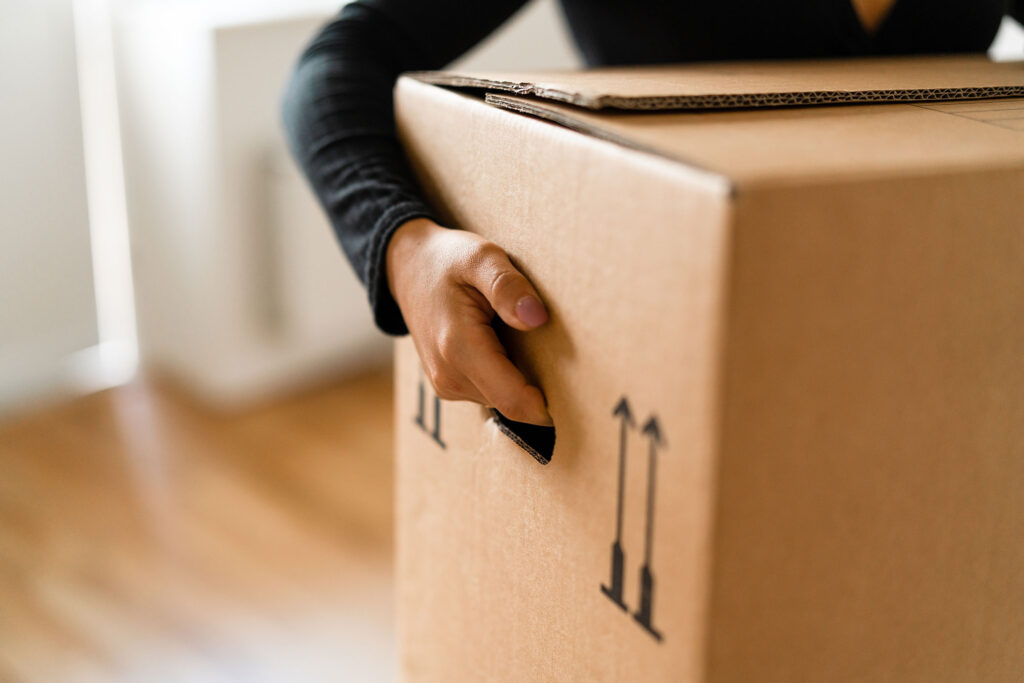As we anticipate a potential “silver tsunami” (a.k.a. a surge of older homeowners downsizing), Amanda Titchenal already has several clients moving on and into smaller homes. The founder of full-service organizing firm Well Organized eased the transition for empty nesters, seniors, widows and widowers, and people going through breakups.
While it may be true that less is more, downsizing comes with its fair share of challenges. Below, Titchenal shares how to streamline your process and navigate complex emotions that come with this major life change.
Westend61/Getty Images
1. Start with what you need to take with you.
Rather than kicking things off with what to toss, Titchenal recommends focusing on what you simply can’t live without. “Turn it into a positive first,” she says. “This breaks the ice and gets you into the groove of decision-making.”
2. Understand that emotions will come up—and are completely valid.
Before tackling any move or organizing project, Titchenal prepares her clients by getting them into the appropriate headspace. If seeing something makes them upset, for instance, it might be worth donating, selling, or giving away.
“There’s negativity or sadness attached to memorabilia sometimes, especially for someone who’s experienced the loss of a loved one,” she says. “If looking at your loved one’s belongings every single day makes you sad, you can’t move forward. It’s hard, but making these difficult decisions gives you permission to let go.”

Luza Studios/Getty Images
3. Prioritize “the big three.”
Go room to room, and think through what you’re ready to part with before your move. The most important spots that could likely use a look-through in any home? The kitchen, garage, and closets.
“Those are the main spaces you use the most,” Titchenal says. “With the kitchen, you don’t need a setting of 16 for everything; you could get by with maybe six or eight. It doesn’t mean you have to get rid of everything, just part of it.”
Titchenal says the same idea is applicable to kitchen appliances and home goods, like a coffee maker, toaster, and slow cooker. If you have multiple types of the same device, choose the smaller or slimmer option. Similarly, paring down the number of sheets and towels you have can easily lighten your load.
Your garage is probably the biggest space you’ll part with, especially if you’re moving into a condo with a carport or apartment without any additional storage area. Things like building materials, old camping gear, and memorabilia might not work with your move.
4. Shift your mindset on stockpiling.
Gone are the days of loading up your Costco cart with what Titchenal refers to as “backstock”—extra paper towels, toilet paper, and more that you may need in a pinch. In a smaller home, you may not have enough room in a pantry to keep these bonus items.
“You have to change your mindset when you’re downsizing when it comes to how much you purchase and hold onto,” she says. “I mentally prepare my clients ahead of time, because you typically can’t hold onto a lot of extra of anything, and you have to live with what you need in real time.”

Yellow Dog Productions/Getty Images
5. Take this as an opportunity to really start fresh.
Readjusting your mindset to look at the positive can do a lot of good, too. This is a time to hit the reset button and give your home a complete refresh. Titchenal says if it’s within your budget, you may benefit from getting brand new essentials.
“If you have the means, it’s almost worth it to buy new things,” she says. “For example, start over with your kitchen and buy a new set of appliances that’s smaller, slimmer, and all matching. Instead of spending all the time and effort trying to purge, you can just start fresh in some categories to make the decision-making a lot easier.”
6. Think about investing in a storage unit.
Already overwhelmed? Titchenal says getting a temporary storage unit is a Band-Aid fix for those who don’t have the time or energy to purge quickly and need to downsize ASAP.
“It’s OK to put some stuff in storage to be dealt with at a later time, but you want to be thoughtful about it,” she says. “It should be things like memorabilia or personal items that are just too emotional to decide on at the time—not extra linens or camping gear you’re never going to need again.”



